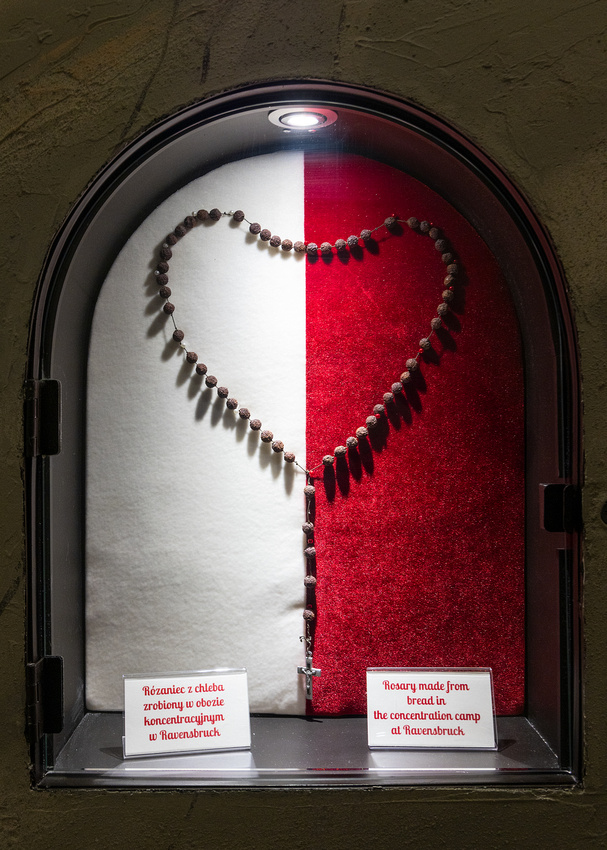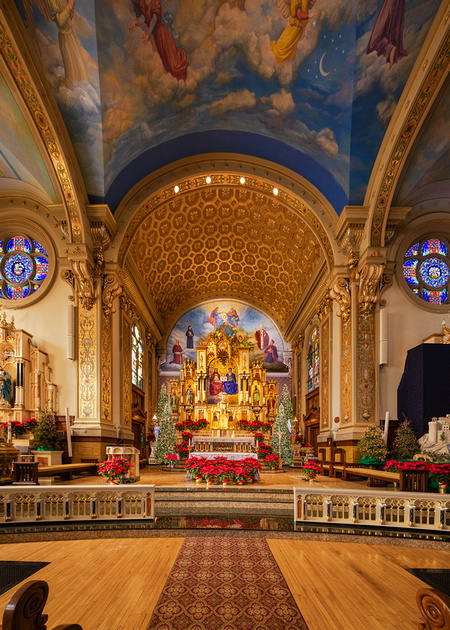To Dwell on and Remember


The morning of January 20 began in a joyous, beautiful, and blessed place. I was at Holy Trinity Polish Catholic Church in the Pulaski Park neighborhood of Chicago. The occasion was a photo tour of this historic church. The tour ended on a somber note.
The church, completed in 1906, is a blend of several architectural styles. This blending is reminiscent of Poland’s Middle Ages churches. As churches sustained damage by war or fire, they were rebuilt and remodeled in a multitude of styles. The architect evidently hoped to remind the Holy Trinity parishioners of churches from the old country.


Christmas decorations in the Polish tradition go up on December 24 and come down February 2nd on Candlemas.
For over a half century, Holy Trinity was the center of activities for its 60,000 parishioners. Everything you could possibly want was available at church or in the square mile that it served. In 1960, when the Kennedy Expressway cut through the heart of Chicago’s Polonia, the neighborhood and parish slowly declined as Poles moved to the suburbs.
Mass is celebrated strictly in the Polish language. In honor of its 100th anniversary, the congregation began a renovation campaign in 2005. Today, the church’s many features are beautifully restored.


Part of the ceiling
Catacombs
During construction, pastor Casimir Sztuczko CSC wanted to set aside an area to venerate the holy relics of saints and the beatified. The result is one of the most distinctive and interesting aspects of Holy Trinity, the so-called Catacombs.
Located in the basement, it consists of a winding path lined with niches containing saintly relics leading up to a chamber containing the grave of Christ. There are now 267 relics in the catacomb.


Part of the Catacombs
The Shot
One heart-wrenching relic commanded my attention. I was looking at a rosary made from bits of bread at Germany’s Ravensbrück concentration camp.
Ravensbrück was a Nazi concentration camp in northern Germany exclusively for women from 1939 to 1945. An estimated 132,000 women passed through the camp during the war. Many of them were slaves working under unspeakable conditions for the Siemens & Halske company. Among other things, Siemens produced field telephones of the type "Feldfernsprecher 33."
About 48,500 women were from Poland. Fifteen percent of the prisoners were Jewish, with eighty-five percent from other races and cultures. Almost half of all prisoners died at Ravensbrück. The majority perished from disease, starvation, overwork, and despair. About 2,200 were gassed.
Hoping they might survive; Polish Catholic prisoners made rosaries from their skimpy bread rations and hid them. Discovery meant death. The homemade rosary on display had been soaked in the blood of a Polish mother and daughter killed at Ravensbrück.
My thoughts were jolted back to the November 10, 1961, episode of The Twilight Zone. In the episode Deaths-Head Revisited about a concentration camp commandant, Rod Serling ended with this powerful outro.
“All the Dachaus must remain standing. The Dachaus, the Belsens, the Buchenwalds, the Auschwitzes; all of them. They must remain standing because they are a monument to a moment in time when some men decided to turn the Earth into a graveyard. Into it they shoveled all their reason, their logic, their knowledge, but worst of all, their conscience. And the moment we forget this, the moment we cease to be haunted by its remembrance, then we become the gravediggers. Something to dwell on and to remember, not only in the Twilight Zone but wherever men walk God's Earth.”
Lest we forget,
Chuck Derus